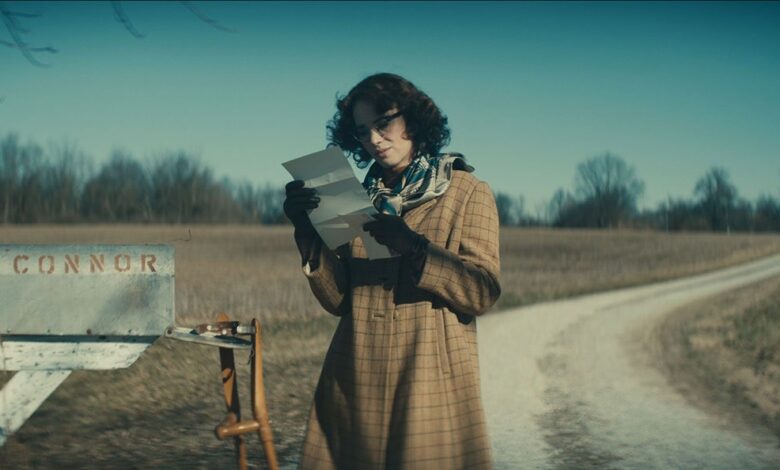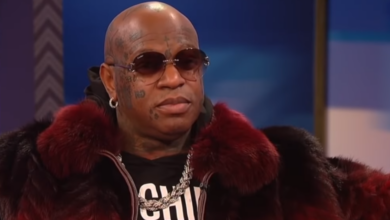How Ethan Hawke’s Flannery O’Connor Biopic Confronts the Author’s Controversial Legacy

Flannery O’Connor, the gothic short story writer born in Savannah, Georgia, was, in her own words, “an integrationist by principle and a segregationist by taste.” Born in 1925 and now regarded as one of her generation’s greatest and most pointed authors, she used the N-word freely in her correspondence. According to an article in The New Yorker, she felt uncomfortable sitting next to Black people on the subway. In her later years, she refused to allow James Baldwin to visit her Georgia farm, writing, “In New York it would be nice to meet him; here it would not.” She criticized Baldwin who, while useful in her eyes for describing the Black experience, had no business trying to describe “everything else.” For O’Connor, this “everything else” boiled down to whiteness, a thorny domain she mined and satirized in her creative work. Only recently has the culture—and in turn the backlash—truly caught up with O’Connor, with the University of Maryland removing her name from a college dorm in 2020, after a petition circulated online.
It’s quite a moment, in other words, to try to make a movie about Flannery O’Connor. But here we are with her first biopic, Wildcat, starring Maya Hawke and directed and co-written by her father, Ethan Hawke, which had its world premiere at the Telluride Film Festival last week; it will debut at the Toronto International Film Festival on September 11. The film has an acute awareness of both its subject’s brilliance and her status as a literary lightning rod, focusing less on her biography and more on the short stories that cemented her reputation. The movie actually reenacts several of these stories—including “Everything That Rises Must Converge,” “Good Country People,” “The Life You Save May Be Your Own,” “Revelation,” “Parker’s Back,” and “The Enduring Chill”—with the same lead actors taking on lead roles in both the stories and in depictions of O’Connor’s actual life.
The characters in these fictions find God’s grace only by being faced with acts of violence. They bounce off the page because O’Connor identifies with their prejudices, their faith, their humor. Two months before she died at age 39, O’Connor sent a letter to a frequent correspondent Maryat Lee, and signed off as one of her larger-than-life, racist characters: Mrs. Ruby Turpin.
Ethan Hawke and co-writer Shelby Gaines explore this identification in Wildcat, blurring the lines between O’Connor’s biography and her fiction. The movie chronicles Flannery’s return home to Georgia, after a stint in New York working on her first novel and befriending luminary writers such as Robert Lowell and Elizabeth Hardwick. It’s later revealed to her that she has lupus, the disease that killed her father when she was 15, and that would cause her own untimely death. Flannery’s mother, Regina (Laura Linney), steps in to take care of her, and the movie depicts the strained yet tender dynamic between them.
Bigotry is a big part of that. Wildcat considers the dimensions of racism that existed in both of Flannery’s worlds—that is, her actual life and her stories. Drawing connections between these two realms, her simultaneous ties with and disgust toward Southern culture, the film grapples with the questions of racism’s legacy as it pertains to O’Connor’s fiction in surprising, thoughtful ways. It accurately presents the author as someone who grew up in a harshly racist environment, absorbing the messages of her mother and those around her while leaning into her independent streak at the same time.
The onscreen relationship between Flannery and Regina less echoes the historical record than one of O’Connor’s seminal short stories, “The Enduring Chill,” in which a young failed writer leaves New York, believing he’s about to die, and begrudgingly places himself in the care of his prejudiced mother. As that character does in that story, Flannery feels increasingly irritated in Regina’s presence. On the drive back to the family farm where she’s destined to spend the rest of her life, her mother and her aunt Duchess (Christine Dye) admit that Flannery’s fiction is not to their tastes and encourage her to instead write a novel like Gone With the Wind. Duchess cracks up at the memory of watching the movie, and how greatly she enjoyed the Mammy character, played by Hattie McDaniel. Flannery rolls her eyes in the backseat.
Next, Hawke imagines Flannery’s familial revenge through fiction by staging her short story “Revelation” for the screen. Taking a break from portraying Flannery’s mother, Linney steps into the role of Ruby Turpin, a woman whose nose is prosthetically enlarged (beyond what the original story describes) so as to appear absurd. Waiting in the doctor’s office so her husband can receive treatment for the ulcer on his leg, Ruby passes the time by listing the different classes of people in the South—and wondering where she’d fit in if she wasn’t herself, a wealthy white woman. The waiting room features types that highlight O’Connor’s signature brand of caricature: a white-trash woman; a genteel lady; and a Wellesley College student, played by Maya Hawke (and thus, a stand-in for Flannery herself), reading a book on human development. At one point, Ruby fantasizes about Jesus Christ appearing before her, as gloriously as in the Sermon on the Mount. Christ informs her she can return to Earth as one of two things: “A n-gger or white trash.” Ruby projects horror at the two choices before selecting the first one. “But that don’t mean a trashy one,” Ruby adds. It’s ugly, vivid, honest stuff.
Later, Linney and Maya Hawke play Mrs. Chestny and her son, Julian, respectively, in another dramatized story, this one most closely reflecting the weathered bond between Flannery and Regina: “Everything That Rises Must Converge.” They’re riding the bus when a Black woman—in the same stylish hat Mrs. Chestny had bragged about wearing herself only moments earlier—boards with her seven-year-old son named Carver. From the seat in the front row, Carver looks back at mother and son playfully; Mrs. Chestny replies with a look of patronizing condescension. Linney’s haunting interpretation of that racist glare is cross-cut with a scene of Regina sitting with Flannery at church, as a young white boy looks back at her with a smile. Regina’s eyes are filled with joy at such innocence, a stark contrast to how Mrs. Chestny—for the time being, Regina’s alter ego—sees the Black child. When we return to the fiction of “Everything That Rises,” Mrs. Chestny, getting off the bus, whistles “woo-hoo” at Carver and offers him a penny. His mother smacks her with her purse and insists they don’t take pennies from anybody.




